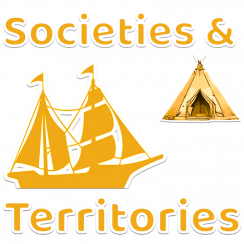The Indigenous people
When the first European explorers arrived in British Columbia, the Songhees, Esquimalt and Haida Nations were already living there. They had no other choice but to cede their territory. The Europeans needed cultivable lands to settle on. The two groups signed treaties giving land to the Europeans, while Indigenous peoples retained the right to hunt and fish.
Indigenous life greatly changed with colonization. First, diseases, especially smallpox, struck their populations and killed many of them. Then, over time, the Indigenous people started to work for the newcomers and even adopted some of their customs. Finally, Indigenous people of various First Nations were confined to reservations.
The Chinese
Like the Indigenous people, Chinese immigrants arriving from California or China did not have an easy life. They had come to British Columbia in the hopes of finding gold and making a fortune. Instead, they were recruited as labourers for the construction of the railway. In China, the population had grown and Canada, three weeks by boat across the Pacific Ocean, seemed to be an interesting place to emigrate.
Chinese immigrants were employed as unskilled workers in the construction of the railway for $1 a day, a very low wage at the time. They were also given the hardest and most dangerous tasks. When the Canadian Pacific railway was completed in 1885, these workers had to find new jobs. Many Chinese people returned to China, but most could not afford the trip back home.
So they settled in the community and created Chinatowns in the cities. They then became gardeners, grocers, cooks or servants. They also worked in the mines and fish canneries. Moreover, they had to face racism and discrimination.
| Number in 1901 | Number in 1911 | |
| Indigenous peoples | 28 949 | 20 134 |
| Chinese | 14 885 | 19 568 |
Source: Canada Year Book
Author: Service national du Récit de l’univers social






